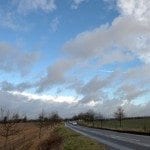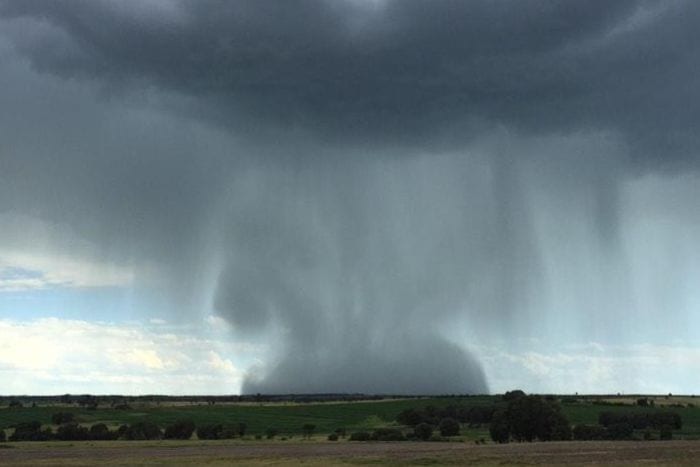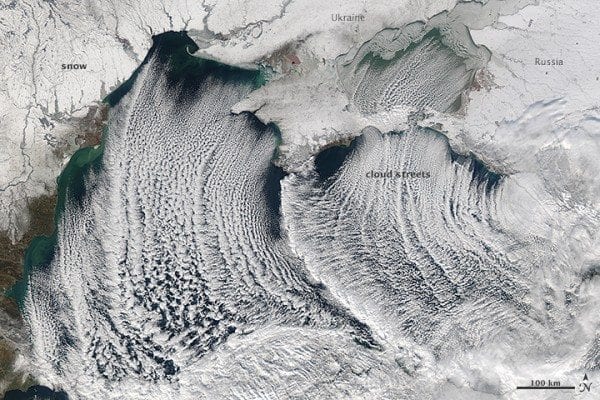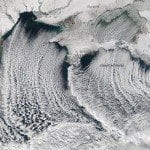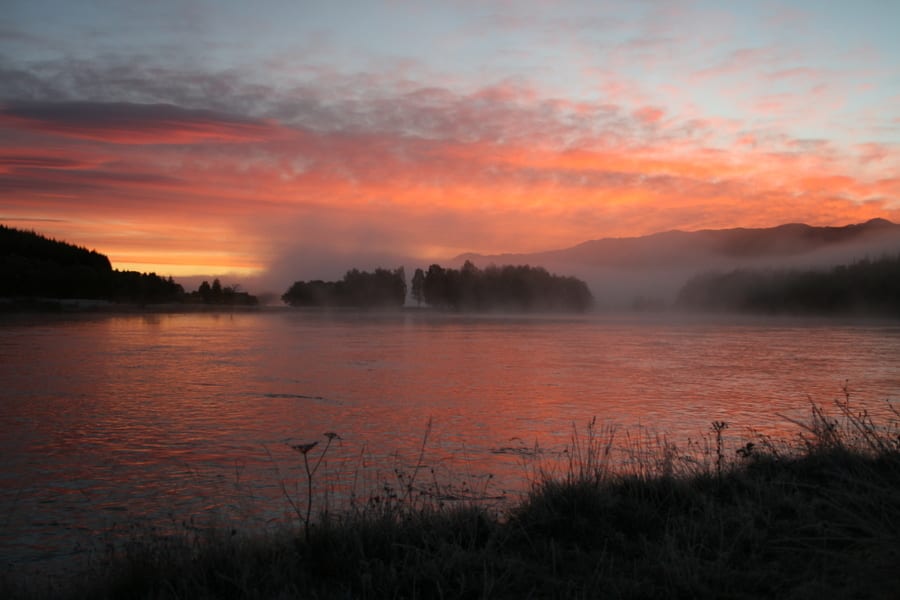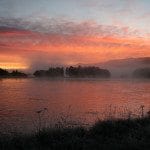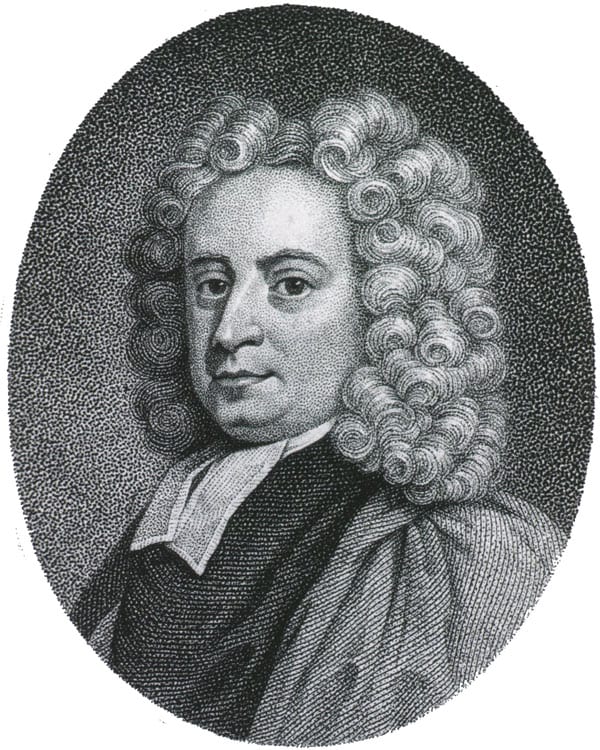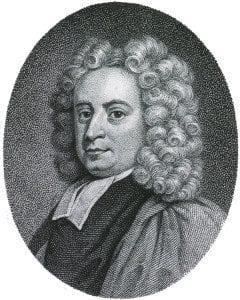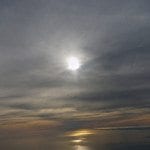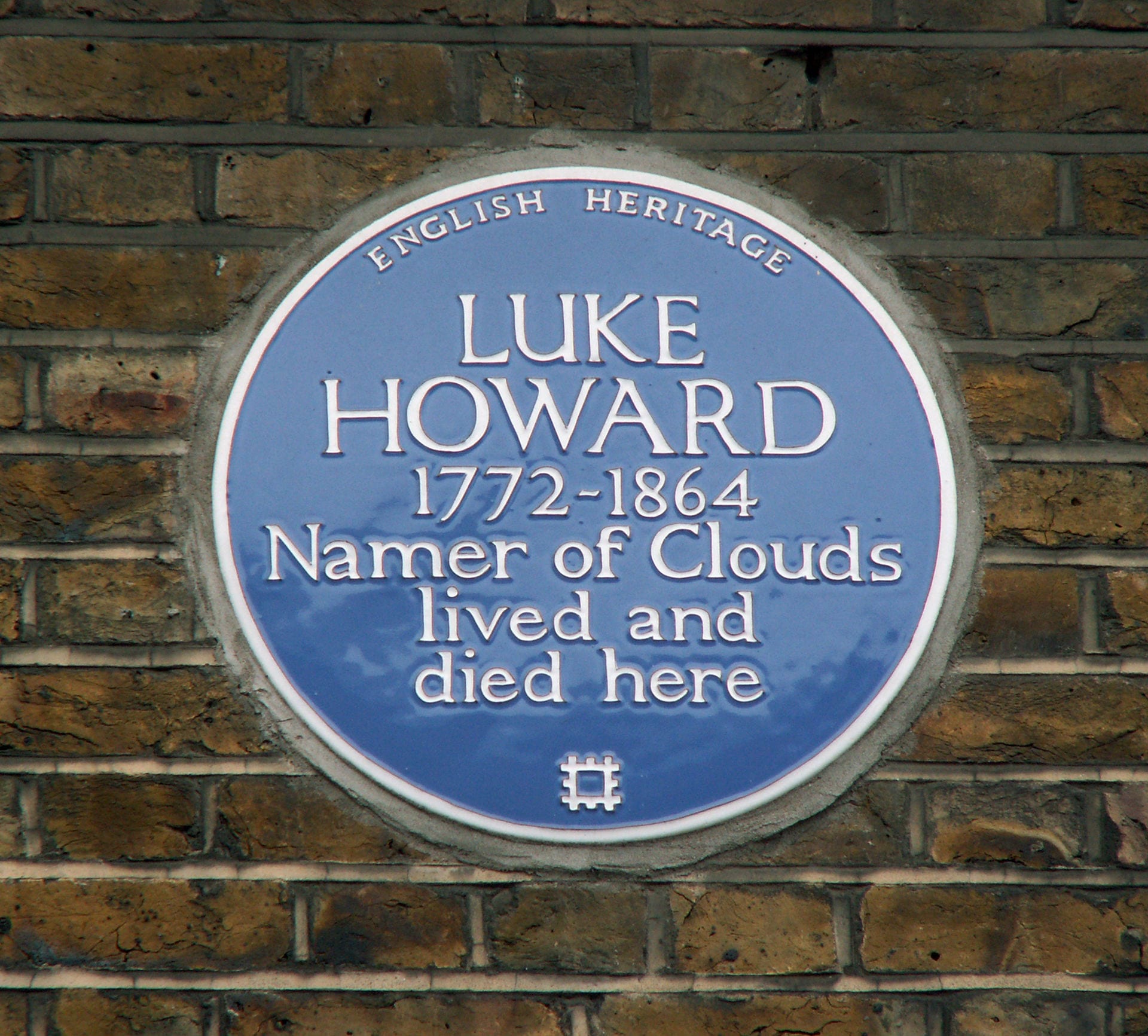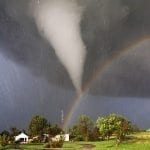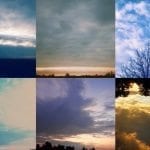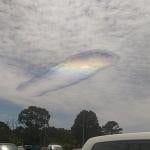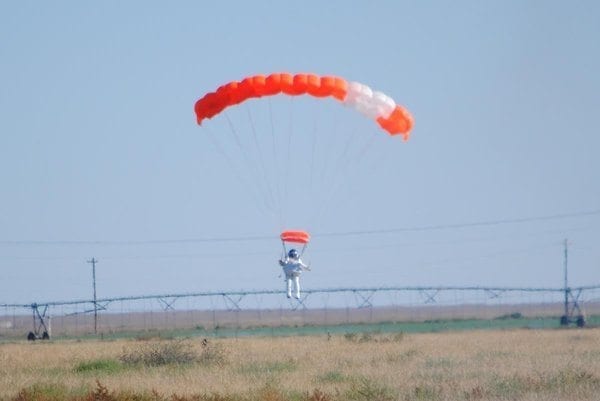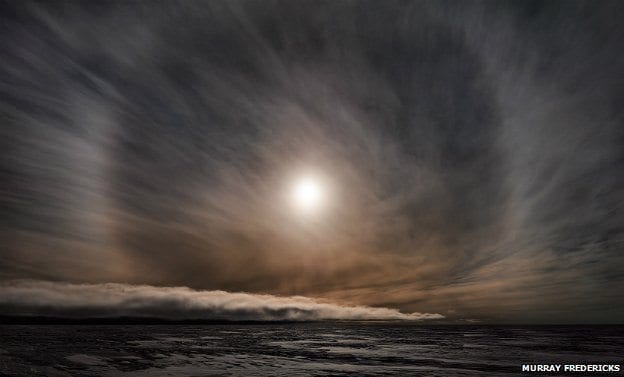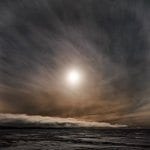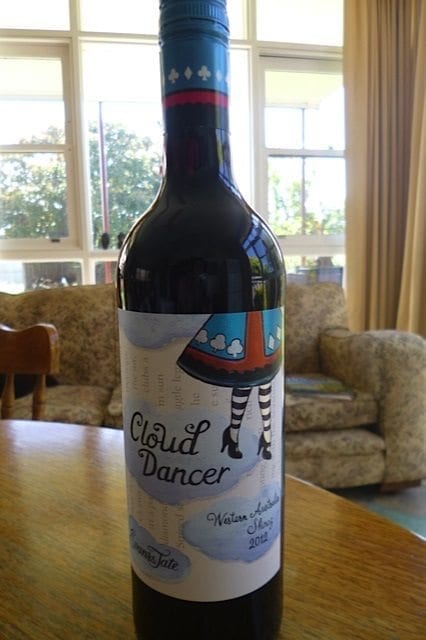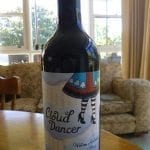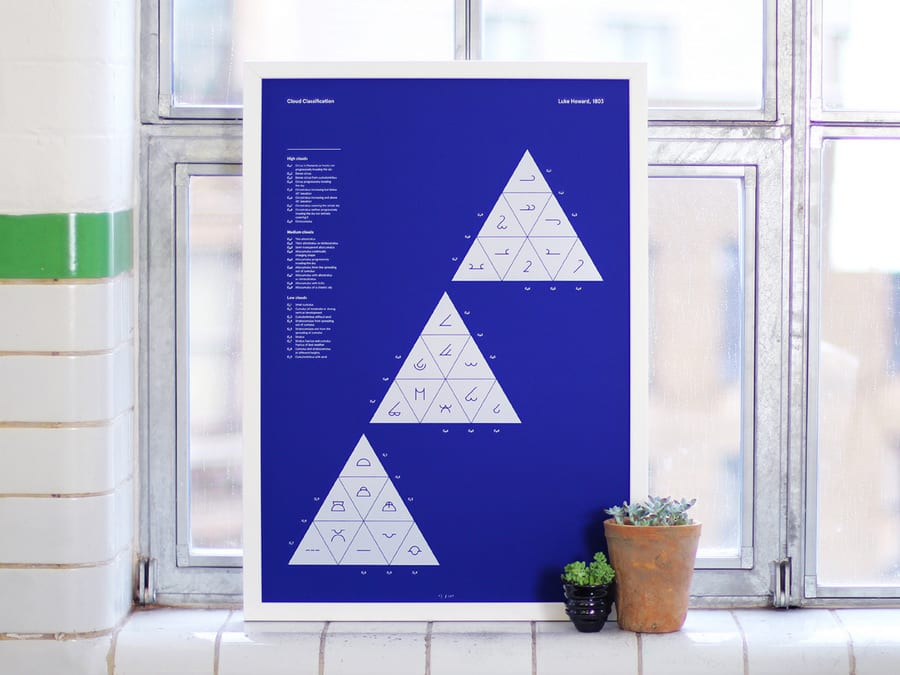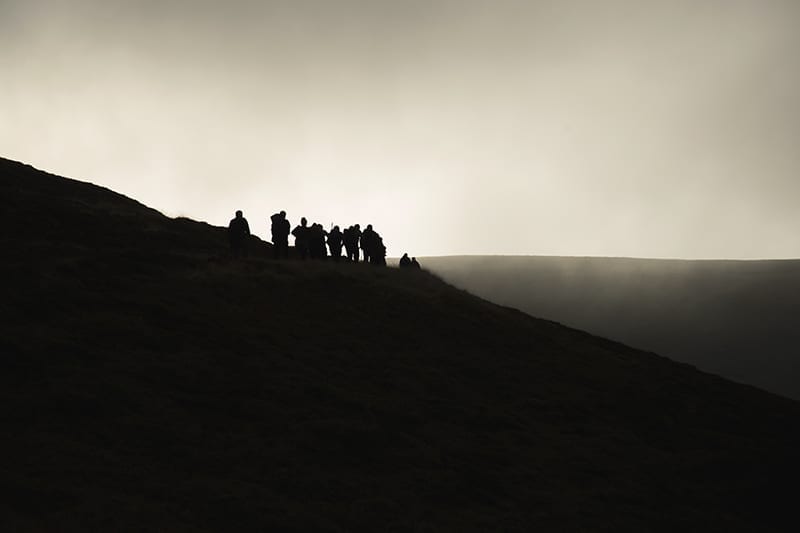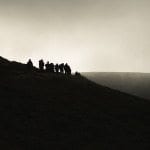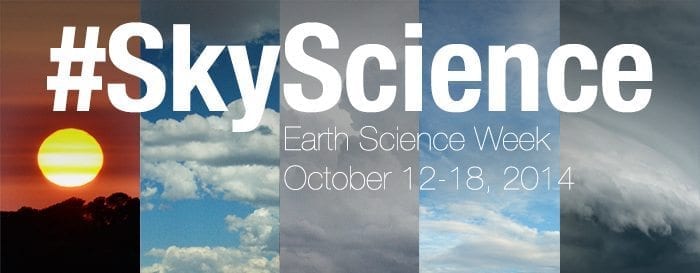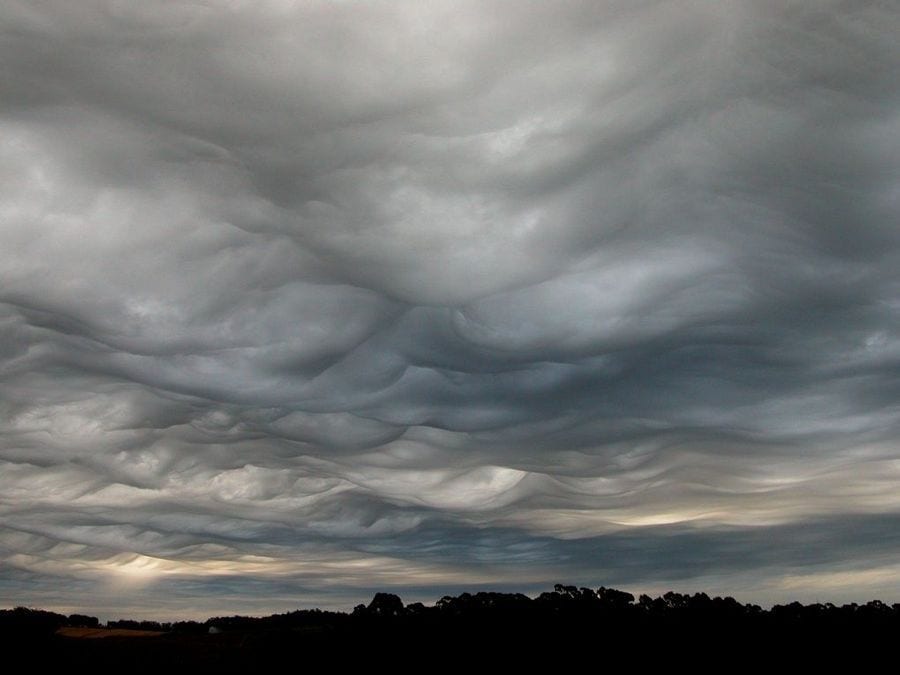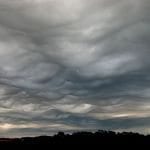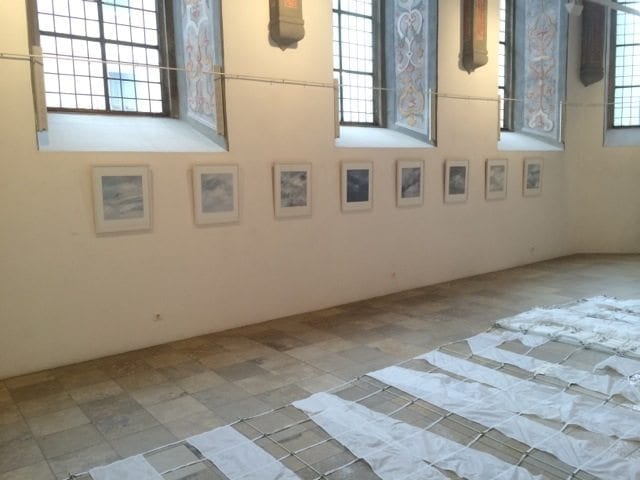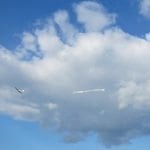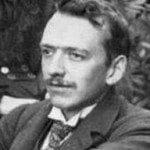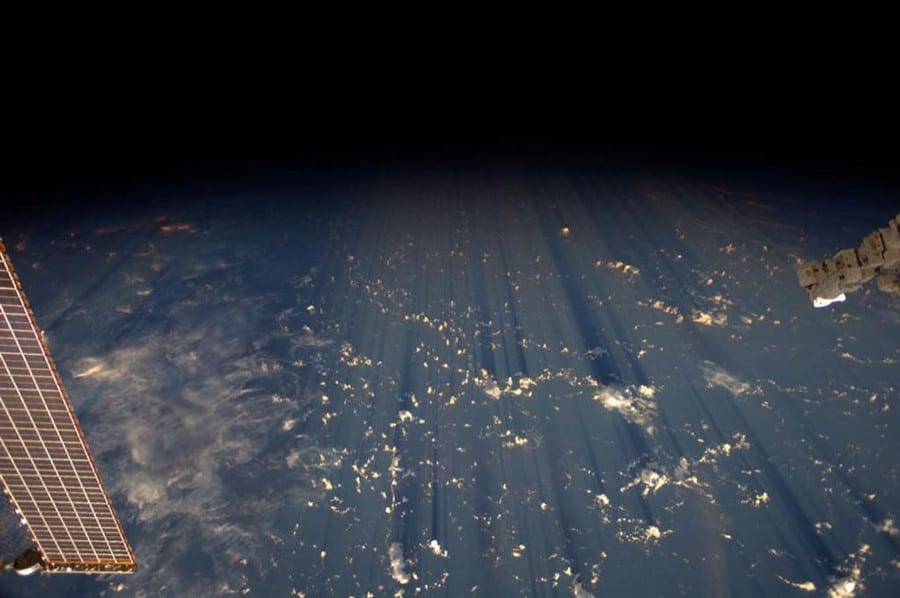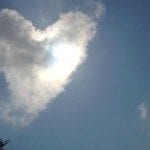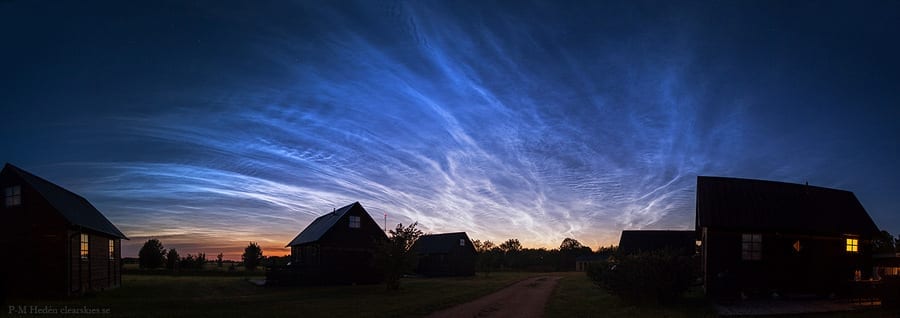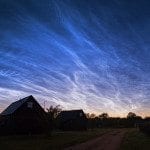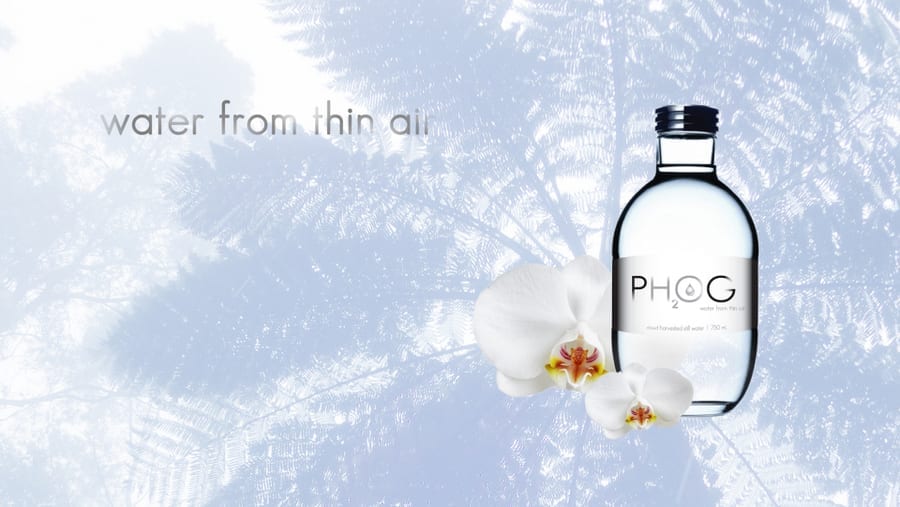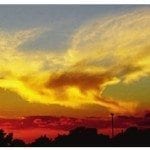This week, Mark Philips, a reporter for CBS Evening News in the US, visited us for a bit of cloudspotting.
Here is his report:
Category: Attention All Cloudspotters
You can’t look around when you’re looking up, so we’ve had a look around for you.
If you have cloud news that you think we should include here, please email it to us at: hello@cloudappreciationsociety.org.
This is a photograph of Cloud Appreciation Society member 30943, Jazz Coathup. It was sent by her owner and companion Paul Coathup who says “this photo is slightly unusual in that she is lifting her head skywards, more often than not she prefers to lay on her back and just gaze upwards in wonder at the sheer variety of clouds that are free for all to see.”
Cloud enthusiast, Tim Oxton, recently sent us this story he saw on the EADT24 website. On 28 January the sky was blue and beautiful over Framlingham, Suffolk. But within minutes photographer Sarah Lucy Brown had captured a dramatic change in the sky. “The colours are incredible and quite a contrast from the blue to the dark grey, all in a matter of minutes,” she said.
To see her images, please view the EADT24 Gallery
ABC Online recently sent us a link to a story featured on their website. This image was captured by Peter Thompson who described it as a “water bomb falling”. The story goes on to explain that the Bureau of Meteorology said Mr Thompson’s rain bomb was in fact a sort of downburst known as a microburst. “A downburst is a concentrated downdraft, typically lasting five to 15 minutes, and is of unusually high speed such that it can cause damage on, or near, the ground,” the BoM website said.
To see the full article, please visit the ABC Online website
Cloud Appreciator, Helen Leavy, recently sent us this link to a very interesting article from Earth Sky.
It explains what Cloud Streets are and how they are formed using diagrams and satellite images such as the one shown here that the MODIS instrument on NASA’s Aqua satellite captured of cloud streets over the Black Sea on January 8, 2015. (NASA Earth Observatory image courtesy Jeff Schmaltz LANCE/EOSDIS MODIS Rapid Response Team, GSFC)
To read the full article, please visit the EarthSky.org website
The Nature and Human Life E-Magazine recently featured a photograph taken by the Cloud Appreciation Society Gallery Editor, Ian Loxley on their front page. The magazine is the first e-Academic Magazine focusing on Environmental Humanities in China. It is non-profit and free to all. It publishes several articles in both Chinese and English and it’s mission is to promote the academic communication between China and the West in the field of environmental humanities and to promote the research of environmental humanities to the public. The magazine is published online four times a year.
Click here to see the latest issue. Their website can be found here.
There are may ways of engaging with the sky, and when we are in the mood for sweeping generalisations it can feel as if there is a ‘male’ approach to the sky, involving nerdy cloud classifications, weather forecasting, and the like, as well as a ‘female’ one, focussing on the emotional quality of clouds and how they stimulate our imaginations. These stereotypes came to mind when we came across this 1733 poem by Dr Thomas Sheridan (1687-1738). Searching for some way to encapsulate womankind, Sheridan hit upon the idea that you can compare a lady to a cloud. He wrote this poem on the subject to his good friend, the famous 18th-Century satirist Jonathan Swift. Swift subsequently replied with a poem arguing that clouds are nothing like ladies, which is far too bawdy to repeat here.
A New Simile for The Ladies
by Dr Thomas Sheridan
I often tried in vain to find
A simile for womankind,
A simile, I mean, to fit ’em,
In every circumstance to hit ’em.
Through every beast and bird I went,
I ransack’d every element;
And, after peeping through all nature,
To find so whimsical a creature,
A cloud presented to my view,
And straight this parallel I drew:Clouds turn with every wind about,
They keep us in suspense and doubt,
Yet, oft perverse, like womankind,
Are seen to scud against the wind:
And are not women just the same?
For who can tell at what they aim?Clouds keep the stoutest mortals under,
When, bellowing, they discharge their thunder:
So, when the alarum-bell is rung,
Of Xanti’s everlasting tongue,
The husband dreads its loudness more
Than lightning’s flash, or thunder’s roar.Clouds weep, as they do, without pain;
And what are tears but women’s rain?The clouds about the welkin roam:
And ladies never stay at home.
The clouds build castles in the air,
A thing peculiar to the fair:
For all the schemes of their forecasting,
Are not more solid nor more lasting.A cloud is light by turns, and dark,
Such is a lady with her spark;
Now with a sudden pouting gloom
She seems to darken all the room;
Again she’s pleased, his fear’s beguiled,
And all is clear when she has smiled.
In this they’re wondrously alike,
(I hope the simile will strike,)
Though in the darkest dumps you view them,
Stay but a moment, you’ll see through them.The clouds are apt to make reflection,
And frequently produce infection;
So Celia, with small provocation,
Blasts every neighbour’s reputation.The clouds delight in gaudy show,
(For they, like ladies, have their bow;)
The gravest matron will confess,
That she herself is fond of dress.Observe the clouds in pomp array’d,
What various colours are display’d;
The pink, the rose, the violet’s dye,
In that great drawing-room the sky;
How do these differ from our Graces,
In garden-silks, brocades, and laces?
Are they not such another sight,
When met upon a birth-day night?The clouds delight to change their fashion:
(Dear ladies, be not in a passion!)
Nor let this whim to you seem strange,
Who every hour delight in change.In them and you alike are seen
The sullen symptoms of the spleen;
The moment that your vapours rise,
We see them dropping from your eyes.In evening fair you may behold
The clouds are fringed with borrow’d gold;
And this is many a lady’s case,
Who flaunts about in borrow’d lace.Grave matrons are like clouds of snow,
Their words fall thick, and soft, and slow;
While brisk coquettes, like rattling hail,
Our ears on every side assail.Clouds, when they intercept our sight,
Deprive us of celestial light:
So when my Chloe I pursue,
No heaven besides I have in view.Thus, on comparison, you see,
In every instance they agree;
So like, so very much the same,
That one may go by t’other’s name.
Let me proclaim it then aloud,
That every woman is a cloud.
Katherine Meadowcroft recently sent us a link to her blog “Humble, All Too Humble” and her recent post “Head, heart and soul in the Clouds”.
It is an article exploring the appreciation of clouds in art and is beautifully written… ” Diaphanous clouds metaphorically nod to life’s permutations and impermanence. One need only beckon the natural world to remind us, it is here, right now, that we must pay attention, because in a flash it changes”.
Click here to read the full article.
Thanks to H Brown for sending us the link to SentIntoSpace.com. Here you will find everything you need to capture your own beautiful images of the thin blue line of the atmosphere and the blackness of space. To find out more please visit their website.
Thanks to Sherry Palmer for telling us about this item on the National Public Radio website. The video shows a rare total cloud inversion which took place in the Grand Canyon on Thursday, 11th December, filling the huge void with what looks like a rolling white fog. You can see more on the National Public Radio website
We wholeheartedly support the campaign by the Tottenham Civic Society to save 7 Bruce Grove, Tottenham, London, which is a Grade II Listed building in a state of severe dereliction and in danger of falling down. Once a fine Georgian townhouse, it was the home of Luke Howard, who, in 1802, proposed a system for classifying clouds. Howard came up with the names ‘Cumulus’, ‘Cirrus’ and ‘Stratus’ and his naming system is still in use today. 7 Bruce Grove is the only building in this London area to bear a blue plaque. This simply says:
Luke Howard (1772-1864) ‘Namer of Clouds’ lived and died here
Due to its severe state of repair, the building is on the English Heritage ‘At Risk Register’. Please add your name to this petition for the local council to force Redwing Estates Ltd, which owns the 7 Bruce Grove, to undertake urgent and essential works. We can’t allow this historic home of the man who did so much for the love of the sky to crumble to the ground.
Thanks go to Cloud Appreciation Society members Laurence Green and Bernard L Reymond who both sent us the link to this amazing image that appeared on NASA’s Astronomy Picture of the Day. The picture was taken by Eric Nguyen in 2004 and shows a Tornado and Rainbow Over Kansas. Eric is a storm chaser and you can read more about how and when he captured his image here
Cloudsform is an ambient musician strongly inspired by clouds. He is working on a new album right now and his next song could be inspired by your photography of clouds.
All you have to do is to tag your photo with #cloudsform on Instagram. This photography would appear on his site as the inspiration.
Thank you to Mirka Biel for bringing this project to our attention.
The Royal Meteorological Society is putting together a special Young Persons edition of their Weather magazine, to be published next summer. The guest editor, 16 year old Daniel Brener from Berkhamsted, is now looking for articles and images to be submitted for the magazine. These should be written by individuals or small groups of people, between the ages of 7 and 21. Articles can be short (around 300 words) or up to 2000 words.
We welcome contributions on all aspects of weather, including climatology, oceanography, historical meteorology and related environmental matters. Submissions might cover;
o weather related fieldwork,
o cross curricula weather projects,
o local weather events,
o investigations into community memories of extreme weather,
o weather balloon launches,
o anything else!
The deadline for submitting articles or images is 5th December 2014.
They should be submitted to education@rmets.org
Our thanks to Society members Veronica Bryan, no. 24,855 and Kim Ter-Horst, no. 14,256, for drawing our attention the fallstreak hole cloud formation that hit the headlines in Australia after being spotted by residents of Wonthaggi, Victoria.
News.com.au reported on their website that Michael Efron, forecaster at the Australian Bureau of Meteorology, reassured locals that the sight was a natural weather phenomenon. Unfortunately, he incorrectly described the rainbow colours appearing in the cloud as iridescence. In fact, the optical phenomenon is a circumhorizon arc, which can appear as sunlight passes through hexagonal-plate shaped ice crystals a high cloud. See the article here.

Mr. Eustace landing. He wore a specially designed spacesuit with a life-support system. Credit Paragon Space Development Corporation
Alan Eustace, 57, a senior vice president of Google and Cloud Appreciation Society member number 32,261 recently broke the world record for sky-diving from the stratosphere. The New York Times reported on this amazing feat quoting Mr Eustace “It was a wild, wild ride,” he said. “I hugged on to the equipment module and tucked my legs and I held my heading”.
The total fall was over 25 miles in 15 minutes – the complete story and video can be seen on the The New York Times website.
Thank you to Peter Dickman for drawing this to our attention.
BBC News Australia recently posted an article and images of photographer, Murray Fredericks’ trip to Greenland’s Ice Sheet. There are some fantastic images including a 22′ & 46′ halo, tangent arc, parry arc, cza and parhelic circle along with a wonderful account of his adventure. It’s well worth reading and can be found on their website here.
Many thanks to John Brigden for drawing this to our attention.
We were recently contacted by Society member, Jan McIntyre, who expressed her delight at stumbling across this beautifully labelled wine.
The producers, Evans & Tate, have a selection of Cloud Dancer wines and we can’t wait to try them!
We recently came across this on the Something Amazing Blogspot.
The unusual wooden cabin designed by Bruit du Frigo looks like a white cloud and serves as an art installation and shelter for up to seven people. Travelers can reserve the cabin and stay overnight for free. It was constructed by Zebra3 and is located in Lormont, France.
You can see more amazing images here
“Every Cloud” has been created by Joseph Perry and is part of his ongoing Typology series, which sees historical scientific data re-imagined into contemporary geometric charts. It celebrates the work of Luke Howard, the amateur meteorologist who brought order to the ever-changing skies. In his book ‘The Modifications of Clouds’ (1803) Howard harnessed the unpredictable beauty of the clouds, classifying them using a Latin naming structure.
Each limited edition print comes hand numbered and signed with copies now available for purchase at £32.00 each from Joseph’s webstore
Society founder, Gavin Pretor-Pinney, will be speaking at this symposium in the Scottish Highlands, which is themed this year on ‘Perceptions of Exploration’. Although there are no tickets left for the day of hosted walks (Friday 14 Nov), they are still available for the symposium day (Saturday 15 Nov). Other speakers include mountaineer Doug Scott and artist Richard Long.
More information here
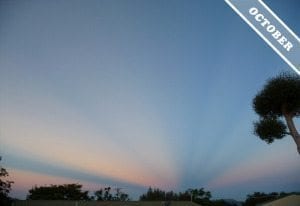 Sometimes when you want to see something unusual in the sky, you need to look in the opposite direction to everyone else.
Sometimes when you want to see something unusual in the sky, you need to look in the opposite direction to everyone else.
Go to Cloud of The Month for October…
We were recently contacted by NASA who wanted us to share their press release inviting members of the public to join #SkyScience Cloud Study…
“NASA is inviting people around the globe to step outside during Earth Science Week, Oct. 12-18, observe the sky and share their observations as citizen scientists.
NASA’s #SkyScience activity is part of an annual educational event organized by the American Geosciences Institute to encourage the public to engage in Earth sciences. Citizen scientists can participate in this global Earth science data collection event by observing, photographing and reporting on clouds over their location as a NASA satellite passes over. Reports and photos will be compared to data collected by NASA Earth-observing instruments as a way to assess the satellite measurements.
Using the hashtag #SkyScience, participants are encouraged to post their cloud and sky photos and observation experiences to Twitter, Instagram, Facebook, Google+ and Flickr. Throughout the week, NASA will share some of the most interesting photos on the agency’s social media accounts.
In addition to #SkyScience, NASA has been engaging students in cloud observation for years through the agency’s Students’ Cloud Observations On-Line (S’COOL) project.
“#SkyScience is another opportunity to get lots of reports in a short period of time and enable additional statistical analysis,” said S’COOL project lead Lin Chambers of NASA’s Langley Research Center in Hampton, Virginia”.
To learn how to get involved in the #SkyScience activity, visit:
For information about NASA’s Earth science activities in 2014, visit:
Society Founder, Gavin Pretor-Pinney was recently interviewed by online magazine, The Verge, about his quest for recognition of the cloud undulatus asperatus.
“Ten years ago, Gavin Pretor-Pinney decided to rebrand clouds, or what he likes to refer to as the “patron goddesses of idle fellows.” For too long, clouds had been co-opted by bleak expressions like “head in the clouds” and “under a cloud”; dismissed as stains on otherwise beautiful blue skies; and maligned as harbingers of crummy weather and bummer vibes. Pretor-Pinney wanted to change all that….” Read More…
There is an exhibition of 23 artists working with clouds taking place in Passau on the German/Austrian border. It is entitled “Wolkenschauen” which means cloudspotting. It is running until 12th October 2014 at the Kunstverein Gallary, Passau and and cointinues in two venues from 18th October until 9th November in the capital city of lower Bavaria, Landshut (30 minutes northeast of Munich). Artists of the exhibiting include Simon Read from London, UK; Laura Vandenburgh from Eugene Oregon, USA; and Karl Reinhartz, Kurt Benning, Michael Klant and Katharina Gaenssler from Germany.
For more information please see HERE
Below are some images sent in by Michael Jank, curator of the exhibition, Katharina Gaenssler, Buttons, 1999, (Cut out from holiday pictures of her journeys, with the city stamped in on the back) and Michael Klant, poetic banner flying over Passau ” I change but I cannot die” (Percy Shelly)
An article was posted on the BBC News Scotland website about Charles Thomson Rees Wilson the only Scottish-born physicist ever to have won the Nobel Prize for Physics and who was inspired by the cloud formations he had witnessed on Ben Nevis.
The story goes into depth about his work tracking particles and his attempts to recreate clouds in his laboratory. Over a 20 year period he developed a cloud chamber which “made things visible whose properties had only previously been deduced indirectly” (Dr Alexander Mackinnon, honorary research fellow (Physics and Astronomy) at the University of Glasgow).
The article ends with a quote from Alan Walker, an honorary fellow of the School of Physics and Astronomy at Edinburgh University who said “Who would have thought that sitting on the top of Ben Nevis being in wonder at the clouds would have ended up actually laying the foundation of discovering things at the very small level.
“That must have been quite something to have gone from just being interested in clouds to ending up inventing something which was the birth of particle physics.”
To read the full article please go to the BBC News Scotland website.
Thanks to Society member, H Brown for bring this to our attention.
Cloud Appreciation Society founder, Gavin Pretor-Pinney was recently interviewed for “The Thinker’s Garden” website. It’s a fairly new website featuring articles on the obscure and sublime in alternative culture, history and art. Gavin was happy to contribute his thoughts and you can see the full interview here.
Geophysicist, Alexander Gerst is currently aboard the International Space Station and from this vantage point, he takes stunning photographs of clouds and their shadows as they stretch to the horizon.
Many thanks to Sara Blumenstein for finding and sharing the link to Alexander’s photographs.
This cloud piano sculpture/installation was created by David Bowen and was commissioned by L’assaut de la Menuiserie, Saint-Etienne, France. This installation plays the keys of a piano based on the movements and shapes of the clouds. A camera pointed at the sky captures video of the clouds. Custom software uses the video of the clouds in real-time to articulate a robotic device that presses the corresponding keys on the piano.
You can read more about this and view a video of it in action on David Bowen’s website
Thanks to Cloud Appreciation Society member Patricia Ludwick, for sending this to us.
Gemma Rapkins, 29 and friend Kiren Ali, 36, were relaxing by a swimming pool in Ebberley, North Devon, UK when they saw this heart shaped cloud drifting overhead. The Western Morning News added a the image and brief account to their website
Thanks to Lorna Stroup Nilsson for telling us about it.
On 31st July NASA’s Astronomy Picture of the Day was entitled “Veins of Heaven” taken by P M Hedén. It shows an exceptional display of noctilucent clouds which were captured earlier in July above the island of Gotland, Sweden. You can read more about it on the their website.
Thanks to Bernard L Reymond for sending us the link to this wonderful page.
We all know how clouds are often to be used to describe negative things – someone ‘having a cloud hanging over them’ or there being ‘a cloud on the horizon’. We were interested to read a scholarly article about the history of these bad connotations written by Steven Connor, and originally aired as an episode of The Essay on BBC Radio 3 on 25 February 2009. Steven’s piece shows that clouds have been getting a bad press for centuries. Many thanks to H Brown (member 7173) for letting us know about this fascinating chronology of cloud dread. Click here to read the article.
Cloud Appreciation Society member, Elizabeth Gordon, recently sent us the link to Drink Smart Water which has been inspired by the clouds. She says it’s a little fun and if you click the screen there are options to play with the clouds!
We were recently contacted by the PHOG Water Team, a water sourcing venture that harvests pure water directly from clouds and fog with the mission to expand clean water access worldwide.
In the summer of 2013, they successfully tested a pilot site on the Caribbean island of St. Vincent and the Grenadines that can produce millions of liters of water a year. This cloud harvesting method is a sustainable water collection alternative that requires zero energy input and avoids issues of groundwater depletion. PHOG has been working on providing a locally sourced and environmentally conscious bottled water option in the Caribbean, while providing resources and materials for people to start their own cloud and fog collection systems worldwide.
You can find out more from their website and also from the video below.
PHOG Water from PHOG Water on Vimeo.
We recently came across this rather clever – and very expensive – ‘smart’ cloud lamp, made by Richard Clarkson Studios. The description claims that “The Smart cloud is the fully featured unit. Remote, Color changing lights, 2.1 Speakers, motion detection & more. Variants include a “satellite add-on cloud”.
For those who feel that the $3,360.00 price tag of the smart Cloud Lamp is a little expensive, there is a slightly cheaper ‘non-smart’ lamp-only option. Those who feel that too is rather pricey can enjoy the free alternative by looking out of the window on a stormy day.
Cloud from Richard Clarkson on Vimeo.
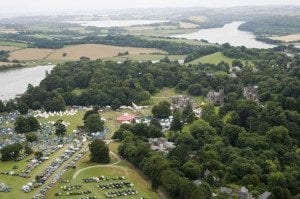 Society founder, Gavin Pretor-Pinney, will be speaking at this year’s Port Eliot Festival in Cornwall, UK. It is ten years since he gave ‘The Inaugural Lecture of the Cloud Appreciation Society’ at Port Eliot. As well as being a guide to cloudspotting, the talk will be a look back over the events that have shaped the Society and world of clouds over the past 10 years.
Society founder, Gavin Pretor-Pinney, will be speaking at this year’s Port Eliot Festival in Cornwall, UK. It is ten years since he gave ‘The Inaugural Lecture of the Cloud Appreciation Society’ at Port Eliot. As well as being a guide to cloudspotting, the talk will be a look back over the events that have shaped the Society and world of clouds over the past 10 years.
Date: Sunday 27 July 2014, 3.30pm
At: Port Eliot Festival, Port Eliot Estate, St Germans, Saltash, Cornwall PL12 5ND, UK
Tickets: Buy day and weekend tickets from festival website
Following a recent media request, Cloud Appreciation Society member, Arun Padake, agreed to be interviewed for The Times of India about the joys of cloud watching. The image here is of his “Golden Eagle” and you can read the full article on The Times of India website.
The first episode in this BBC2 series (UK) was aired last week and explored clouds from within in one of the world’s largest airships. Felicity Aston was the presenter and you can read her blog about her experience here
This Wednesday, 23rd July, they will be continuing their journey across the USA in the airship, and the team will question how the atmosphere changes with altitude and how that has an impact on the life found there.
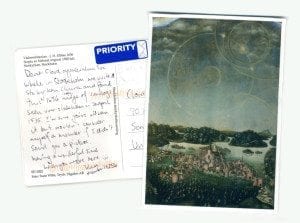 We always like to receive a postcard in the office. So it was great to get this one recently from Kim Ter-Horst, Member No 14256, who sent it while on holiday in Sweden. The card shows the earliest surviving painting of ‘halo phenomena’, those arcs and spots of light that can result as sunlight passes through clouds composed of ice crystals with particular shapes.
We always like to receive a postcard in the office. So it was great to get this one recently from Kim Ter-Horst, Member No 14256, who sent it while on holiday in Sweden. The card shows the earliest surviving painting of ‘halo phenomena’, those arcs and spots of light that can result as sunlight passes through clouds composed of ice crystals with particular shapes.
Painted in 1636 by Jacob Elbfas, and hanging in the Storkyrkan church in Stockholm, the painting is called Vädersolstavlan, which is the Swedish for ‘The Sun Dog Painting’. Sun dogs are one type of halo phenomenon that appear as bright spots of light on one or other side of the sun when sunlight passes at a certain angle through cloud composed of clear, hexagonal shaped ice-crystals. The painting is a copy of an original, now lost, attributed to Urban Målare depicting a dramatic display of halo phenomena that occurred on April 20, 1535. It seems there were a whole range of optical phenomena that day besides sun dogs, many of which are identifiable by their appearance in the painting. Although all the positions are not quite right and not all of these optical effects could have appeared in the sky at the same time of day, the phenomena shown in addition to the sun dogs include a 22-degree halo, a circumscribed halo, a circumzenithal arc and a parhelic circle.
Many thanks to Kim for sending us a card so well suited to cloud nerds.
Cloud watcher Bernard L Reymond recently sent us a link to NASA’s Astronomy Picture of the Day. It shows Iridescent clouds over Thamserku and the photographer was Oleg Bartunov. If you click through to the NASA page you will see a very good explanation of how these clouds are formed.






